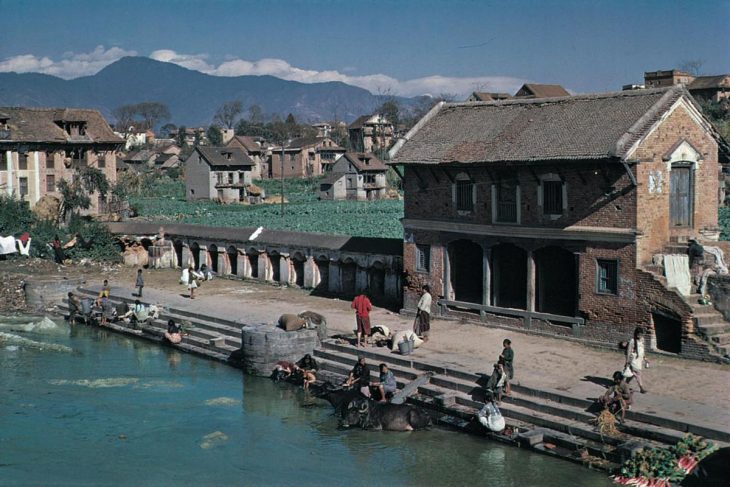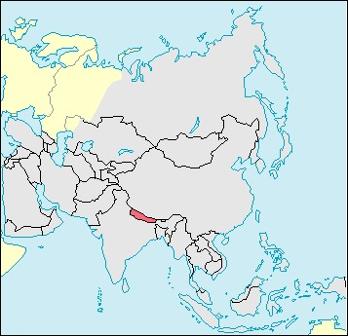What is the Capital of Nepal? Kathmandu

Capital City of Nepal: Kathmandu
City Overview
Kathmandu is the capital and largest city of Nepal, located in the Kathmandu Valley in central Nepal, surrounded by the majestic Himalayas. The city serves as the political, cultural, and economic center of Nepal and is one of the most important cities in South Asia due to its historical significance and role in the wider region. Kathmandu’s rich history dates back over 2,000 years, and it has long been a hub for ancient trade routes between India, China, and Tibet. Today, Kathmandu is a bustling metropolis, blending ancient temples, shrines, and monuments with the vibrancy of modern life.
As Nepal’s political capital, Kathmandu is home to the Government of Nepal, including the President’s Office, Prime Minister’s Office, and the Supreme Court. The city is also a major center for tourism, with visitors flocking to Kathmandu to explore its ancient culture, historical landmarks, and gateway to the trekking and mountaineering expeditions in the surrounding Himalayan region.
Kathmandu sits at an altitude of 1,400 meters (4,600 feet) above sea level, which contributes to its temperate climate. The valley itself is seismically active, and the city has experienced several devastating earthquakes in its history, most recently the 2015 earthquake, which caused widespread destruction.
Key Facts
- Area: 50.67 km²
- Population: Approximately 1.5 million (2021 estimate)
- Time Zone: Nepal Time (NPT), UTC +5:45
- Highest Mountain: Mount Everest, 8,848 meters (29,029 feet), located about 160 km to the east of Kathmandu.
- Longest River: Koshi River, a major river system that flows from the Himalayas and is the longest in Nepal.
Major Landmarks
Kathmandu is a treasure trove of cultural heritage, showcasing Nepal’s rich religious and architectural history. The city is home to several UNESCO World Heritage Sites, ancient temples, stupas, and palaces. Some of the key landmarks include:
- Swayambhunath Stupa (Monkey Temple): This is one of the most famous landmarks in Kathmandu and one of the oldest and most important stupas in Nepal. It sits atop a hill, offering panoramic views of the city. The stupa is also known as the Monkey Temple due to the large population of monkeys that inhabit the area. It is a Buddhist pilgrimage site and an important cultural and historical monument.
- Pashupatinath Temple: Located on the banks of the Bagmati River, Pashupatinath is one of the most sacred Hindu temples in Nepal and the subcontinent. Dedicated to Lord Shiva, it attracts thousands of devotees and tourists every year. The temple complex includes cremation ghats and shrines, contributing to its spiritual and cultural importance.
- Durbar Square: Kathmandu Durbar Square is the heart of the city and one of its most iconic landmarks. It is home to a series of royal palaces, temples, and courtyards, many of which date back to the Malla period (12th to 18th centuries). The square is surrounded by beautiful Newar architecture, with intricately carved wooden windows and temples.
- Boudhanath Stupa: Another UNESCO World Heritage Site, Boudhanath is one of the largest and most important Buddhist stupas in Nepal. It is a hub for Tibetan Buddhism, and its location on the outskirts of Kathmandu makes it a peaceful retreat for both locals and travelers.
- Garden of Dreams: This historical garden, originally built by a prime minister in the early 20th century, is a serene escape in the middle of the bustling city. It features beautiful colonial-era architecture and lush greenery.
- Thamel: Known as Kathmandu’s tourist hub, Thamel is a vibrant neighborhood filled with restaurants, shops, and hotels catering to travelers. The area has become a cultural melting pot, with diverse cuisines and crafts from across Nepal and the world.
- Himalayan Mountaineering Institute: Although not directly in Kathmandu, the Himalayan Mountaineering Institute in the nearby town of Sundarijal serves as an educational center for mountaineering and adventure tourism. It is an important training site for aspiring climbers heading to the Himalayas.
- Patan Durbar Square: Located across the river from Kathmandu in the city of Patan, this historic square is also a UNESCO World Heritage Site. It is renowned for its stunning Newar architecture and beautiful temples, reflecting the rich cultural heritage of the Kathmandu Valley.
Climate Overview
Kathmandu enjoys a subtropical highland climate, with distinct seasons: spring, summer, monsoon, and winter. Due to its altitude and proximity to the Himalayas, Kathmandu has a relatively moderate climate compared to other parts of Nepal.
Winter (December to February) is cool and dry, with temperatures averaging between 7°C (45°F) and 18°C (64°F). The summer months (June to August) bring higher temperatures and heavy monsoon rains, with temperatures ranging from 20°C (68°F) to 30°C (86°F). The rainy season can cause significant disruptions, but the surrounding mountains provide stunning views, particularly after the rains subside. Spring and autumn (March to May, and September to November) are considered the best times to visit Kathmandu, with mild temperatures and low humidity.
| Month | Avg Temperature (°C) | Precipitation (mm) | Sunny Days |
|---|---|---|---|
| January | 10 | 20 | 8 |
| February | 13 | 15 | 9 |
| March | 16 | 30 | 10 |
| April | 20 | 40 | 11 |
| May | 25 | 80 | 11 |
| June | 27 | 150 | 8 |
| July | 26 | 200 | 7 |
| August | 25 | 180 | 8 |
| September | 24 | 130 | 9 |
| October | 21 | 40 | 10 |
| November | 16 | 15 | 9 |
| December | 11 | 10 | 8 |
Other Capital Cities in Nepal’s History
Throughout its history, Kathmandu has remained the central hub of political and cultural life, but there have been other cities of significance in Nepal’s history.
Patan (During the Malla Kingdom)
While Kathmandu was the primary capital, Patan (also known as Lalitpur) was an important political and cultural center during the Malla period (12th–18th century). It was an independent city-state for several periods, and its Durbar Square was once the location of the royal palace. Patan’s wealth, culture, and architectural influence make it an important historic center.
Bhaktapur (During the Malla Kingdom)
Similarly, Bhaktapur (also known as Bhadgaon) served as a capital of one of the three Malla kingdoms (along with Kathmandu and Patan) during the medieval period. Bhaktapur is famous for its preserved medieval architecture and Newar culture.
Country Facts
Nepal is a landlocked country located in South Asia, nestled between China to the north and India to the south, east, and west. The country is renowned for its breathtaking landscapes, including the world’s highest peak, Mount Everest, and its rich cultural diversity, with hundreds of ethnic groups and languages spoken.
Key Facts
- Population: Approximately 30 million (2023 estimate)
- Area: 147,516 km²
- Capital: Kathmandu
- Largest City: Kathmandu
- Currency: Nepalese Rupee (NPR)
- Official Language: Nepali
- ISO Country Codes: NP (Alpha-2), NPL (Alpha-3), 524 (Numeric)
Additional Information
- Government: Nepal is a federal democratic republic. The President is the ceremonial head of state, while the Prime Minister is the head of government. Nepal has a bicameral parliament, and the political system is based on multi-party democracy.
- Economy: Nepal’s economy is based on agriculture, tourism, and remittances. The tourism industry is vital due to the country’s natural beauty, with the Himalayas, including Mount Everest, attracting trekkers and mountaineers. The economy faces challenges such as poverty, unemployment, and dependence on foreign aid.
- Religion: Nepal is the birthplace of Buddhism, and the majority of the population practices Hinduism, with Buddhism, Islam, and other religions also represented.
Kathmandu stands as the political and cultural heartbeat of Nepal, a country deeply intertwined with its mountains, heritage, and diverse populations. Despite its challenges, Kathmandu continues to be a focal point for Nepali identity and offers a window into the rich traditions and modern aspirations of this fascinating nation.














































